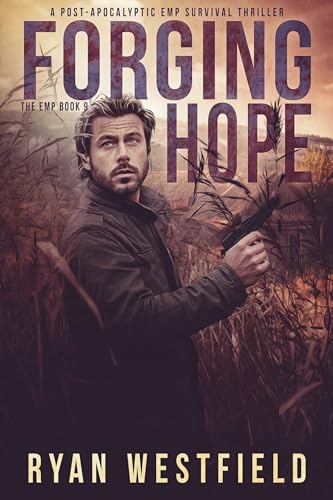9 Best Post-Apocalyptic Books That Explore Survival and Hope in Dystopian Worlds
Imagine a world stripped of its comforts and order, where survival depends on wit and resilience. Post-apocalyptic fiction plunges you into such realms, offering gripping narratives that explore humanity’s darkest and most hopeful corners. These stories captivate with their vivid depictions of life after civilization’s fall.
Whether you’re a seasoned fan of the genre or a newcomer seeking thrilling reads, this list of the 9 best post-apocalyptic books will immerse you in tales of dystopian futures and resilient heroes. Get ready to embark on unforgettable journeys through desolate landscapes and discover the resilience of the human spirit.
1. “The Road” by Cormac McCarthy
“The Road” by Cormac McCarthy is a haunting tale of a father and son’s journey through a desolate, post-apocalyptic world. It captures the essence of survival against insurmountable odds, making it a must-read for fans of the genre.
Overview of the Bleak Journey
Follow the father and son duo as they traverse a barren landscape, struggling to find food, shelter, and safety. Their journey, fraught with dangers from both the environment and other survivors, tests their perseverance and love. Sparse descriptions and stark prose give you an unflinching view of humanity’s fragility. McCarthy’s writing style makes the bleakness palpable, pulling you deeper into the desolation.
Themes of Hope and Desolation
Explore how McCarthy juxtaposes hope amid despair, creating a powerful narrative. The father and son’s bond symbolizes unwavering hope in a shattered world. Small gestures, like sharing food or comforting one another, become monumental acts of love and faith. These moments of tenderness highlight the resilience of the human spirit, even when surrounded by utter destruction. The novel’s portrayal of hope and desolation resonates deeply, offering a poignant reflection on what it means to hold on in the darkest of times.
2. “Station Eleven” by Emily St. John Mandel
The Convergence of Lives Before and After a Pandemic
“Station Eleven” masterfully intertwines the lives of characters before and after a devastating flu pandemic wipes out 99% of humanity. You’ll follow the disparate narratives that converge around an actor’s sudden death on stage, a traveling symphony, and a mysterious comic book. Mandel’s seamless transitions between timelines highlight the profound connections between individual destinies and the broader collapse of civilization.
Impact of Art and Humanity
The novel underscores art’s enduring power, even in the remnants of a shattered world. You’ll discover how the traveling Shakespearean troupe, known as the Symphony, finds solace and purpose in performing for isolated communities. Through these acts, Mandel illustrates the indomitable human spirit and the importance of preserving culture. Art becomes a beacon of hope, a reminder of the world that once was, and a testament to humanity’s resilience in the face of unimaginable adversity.
3. “Parable of the Sower” by Octavia Butler
A Vision of a Deteriorating Society
Witness a bleak depiction of the future in Octavia Butler’s “Parable of the Sower.” Set in a not-so-distant 2020s, the novel showcases a society ravaged by climate change, economic crises, and widespread violence. You follow the story of Lauren Olamina, a teenager with hyperempathy, as she navigates through a world where civilization is unraveling. With increasing insecurity and community breakdowns, the narrative brings you face-to-face with the grim realities of a deteriorating society.
Exploration of Religion and Survival
Discover profound reflections on faith and resilience in “Parable of the Sower.” Lauren creates a new belief system called Earthseed, centered on the idea that “God is Change.” As you engage with her spiritual journey, Butler compels you to ponder the role of religion in human survival. Earthseed’s teachings guide Lauren and her followers, serving as a beacon of hope amidst chaos. Through this exploration, Butler masterfully intertwines survival tactics with philosophical musings, offering insights into how ideology can shape, and even save, lives in desperate times.
4. “On the Beach” by Nevil Shute
“On the Beach” by Nevil Shute dives into a world grappling with the aftermath of a devastating nuclear war.
The Grim Reality of a Post-Nuclear World
Explore a bleak depiction of humanity on the brink of extinction. “On the Beach” portrays a world where nuclear fallout has wiped out most life, and the remaining survivors in Australia await their inevitable fate. This harrowing narrative forces you to confront the consequences of global conflict and the fragile nature of human existence.
Emotional and Psychological Depths
Discover the profound emotional and psychological struggles of the characters. Shute’s novel delves deep into the minds of people facing certain death. You’ll find their attempts to maintain normalcy and hope both heartbreaking and remarkably human. The story emphasizes personal relationships and the mental toll of waiting for the end, making it a compelling read about the endurance of the human spirit in the darkest times.
5. “A Canticle for Leibowitz” by Walter M. Miller Jr.
Cyclical Nature of History
Explore the cyclical nature of history in “A Canticle for Leibowitz”. The novel spans centuries, depicting the rise and fall of civilizations after a nuclear apocalypse. Understand how history’s repetitive patterns show humanity’s tendency to repeat its mistakes. Miller Jr. uses a monastery preserving knowledge to highlight this cyclical theme, illustrating the constant struggle between ignorance and enlightenment.
Themes of Faith and Knowledge Preservation
Discover how faith and knowledge preservation intertwine in “A Canticle for Leibowitz”. The monks’ dedication to safeguarding ancient texts amid societal collapse stands at the core of the story. Witness the tension between science and religion as characters grapple with moral dilemmas. Miller Jr. masterfully weaves these themes together, showcasing the vital role of faith in preserving human knowledge and culture post-catastrophe.
6. “Oryx and Crake” by Margaret Atwood
Margaret Atwood’s “Oryx and Crake” transports you to a dystopian world shaped by genetic manipulation and explores deep ethical quandaries in science and technology.
Dystopian World Through Genetic Manipulation
Atwood crafts a compelling vision of a world where genetic engineering runs rampant. You witness bioengineered animals and plants, such as genetically modified “pigoons” and “rakunks,” that challenge the natural order. Atwood’s portrayal of gene splicing gone wrong creates a haunting and convincing post-apocalyptic landscape that’s both fantastical and unsettling.
Ethical Quandaries in Science and Technology
Atwood doesn’t just show you scientific advancements; she delves into the ethical implications behind them. You are prompted to question the morality of creating life forms solely for human benefit and the unchecked pursuit of scientific progress. Through the characters of Oryx, Crake, and Snowman, you explore complex moral dilemmas, making you ponder the consequences of playing god with nature.
7. “The Stand” by Stephen King
Stephen King’s “The Stand” offers a chilling vision of a world ravaged by a superflu that wipes out most of humanity.
Battle Between Good and Evil After a Plague
Witness the catastrophic aftermath of Captain Trips, a man-made plague that decimates the global population. With society in ruins, two factions emerge, embodying the ultimate struggle between good and evil. On one side, there’s the benevolent group led by Mother Abagail, a 108-year-old spiritual leader. On the other, the malevolent forces rally behind the sinister Randall Flagg, a dark figure with supernatural abilities.
Character Building and Moral Choices
Follow a diverse cast of characters as they navigate this desolate landscape, each faced with profound moral dilemmas. You’ll meet Stu Redman, a reluctant hero, and Frannie Goldsmith, a determined survivor. King’s rich character development makes you question what you’d do in a similar scenario, delving into themes of loyalty, sacrifice, and redemption. Their choices ultimately shape the fate of humanity, underscoring the novel’s core message: even in the darkest times, hope and humanity can prevail.
8. “The Postman” by David Brin
David Brin’s “The Postman” is a compelling story of hope and perseverance in a dystopian America. It combines themes of rebuilding civilization and the transformative power of communication.
Rebuilding Civilization Through Symbolism
The protagonist, Gordon Krantz, represents the fragmented remains of civilization. He stumbles upon a postman’s uniform and uses it to bring hope to scattered communities. By delivering old mail, he becomes a symbol of a lost but not forgotten society, sparking the belief that order can return. His actions highlight the importance of symbols in rebuilding trust and unity among people.
The Power of Communication
“The Postman” emphasizes how communication can bridge fractured communities. Gordon’s letters become more than just messages; they serve as lifelines, connecting isolated individuals and offering a semblance of normalcy. Brin cleverly illustrates that even in the face of societal collapse, the flow of information and human connection remain critical to survival and regeneration.
9. “Alas, Babylon” by Pat Frank
Surviving a Nuclear Fallout
“Alas, Babylon” vividly illustrates survival in the aftermath of a nuclear war. You follow Randy Bragg, who must navigate a world where modern conveniences cease to exist. Stockpiling essentials like canned food and fuel becomes critical. Confronting resource scarcity head-on, you witness characters adapting primitive methods for daily needs. This depiction of adaptability and resilience offers valuable survival insights for readers fascinated by post-apocalyptic scenarios.
Community and Cooperation In a New World
The novel underscores the importance of community and cooperation. You observe how neighbors band together, pooling resources and skills. Randy emerges as a leader, showing that mutual support is key to overcoming adversity. Gardening, bartering, and sharing knowledge become essential survival strategies. “Alas, Babylon” demonstrates that building a strong, united community can make the difference between survival and failure, providing a compelling narrative on human solidarity in the face of catastrophe.
Conclusion
Exploring post-apocalyptic literature offers more than just thrilling narratives; it presents profound reflections on human resilience, ethics, and the power of community. Each book on this list provides a unique perspective on surviving and thriving in a world transformed by catastrophe. From grappling with moral dilemmas to rebuilding societies, these stories challenge you to consider what it truly means to be human in the face of adversity. Dive into these compelling reads and discover the enduring spirit of hope, perseverance, and unity that defines the best of post-apocalyptic fiction.






